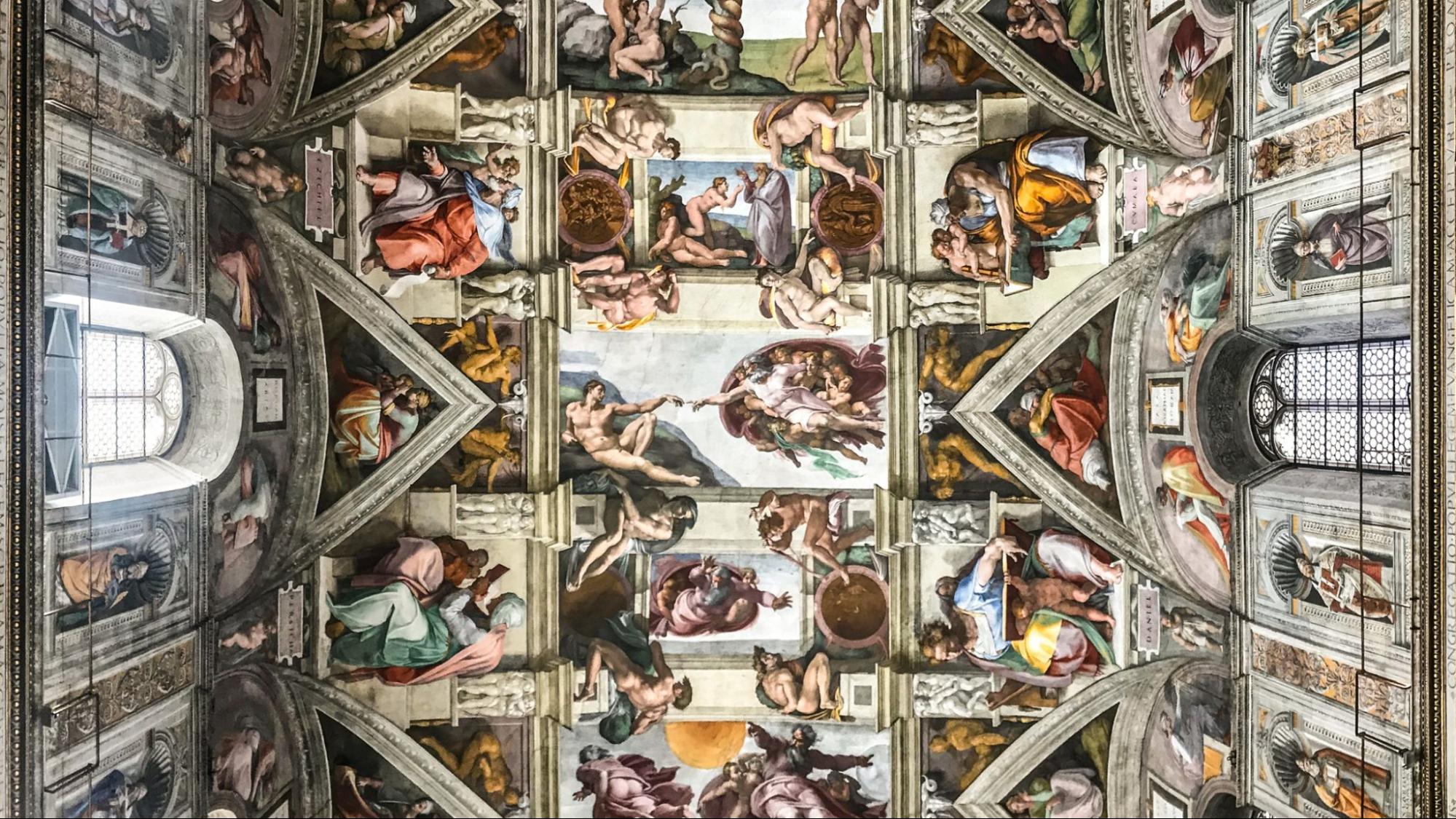Top 10 Famous Christian Artwork
07-15-2024
Christian artwork has played a significant role in the history of art, reflecting the deep religious beliefs and values of Christianity. From awe-inspiring sculptures to magnificent paintings, Christian art spans centuries and styles, capturing pivotal moments from the Bible and the life of Jesus Christ. In this article, we explore the top 10 most famous Christian artworks that have left a lasting impression on believers and art lovers alike.
The Last Supper by Leonardo da Vinci
Leonardo da Vinci's "The Last Supper" is perhaps the most famous Christian artwork ever created. Painted between 1495 and 1498, this masterpiece depicts the moment Jesus announces that one of his disciples will betray him.
Significance: The painting captures the emotional intensity of the scene, with each apostle's reaction vividly portrayed. It's housed in the Convent of Santa Maria delle Grazie in Milan, Italy.
Artistic Elements: Leonardo's use of perspective, the composition of the apostles, and the central figure of Jesus create a harmonious yet dramatic depiction of this critical biblical event.
The Creation of Adam by Michelangelo
Michelangelo's "The Creation of Adam" is one of the most iconic paintings on the ceiling of the Sistine Chapel in Vatican City. Completed in 1512, it illustrates the biblical creation narrative from the Book of Genesis.
Significance: The image of God's hand reaching out to Adam is universally recognized and symbolizes the connection between the divine and humanity.
Artistic Elements: Michelangelo's masterful use of form and composition emphasizes the physical beauty and divine spark of humanity, making it one of the most famous religious paintings.
The Madonna and Child by Raphael
Raphael's "The Madonna and Child" series consists of numerous paintings depicting the Virgin Mary with the infant Jesus. The "Sistine Madonna" (1512) stands out among these.
Significance: These paintings emphasize Mary's purity and tenderness and Jesus's divine nature. They have been celebrated for their grace and beauty.
Artistic Elements: Raphael's skillful use of color, light, and delicate expressions creates a serene and holy atmosphere that has captivated viewers for centuries.
Christ Pantocrator in Hagia Sophia
The "Christ Pantocrator" mosaic in Hagia Sophia, Istanbul, is one of the most significant examples of Byzantine Christian artwork. Created in the 13th century, it depicts Christ as the ruler of the universe.
Significance: This mosaic highlights the omnipotence and eternal nature of Christ, serving as a powerful image.
Artistic Elements: The gold background, intricate details, and solemn expression of Christ reflect the grandeur and reverence of Byzantine art.
The Transfiguration by Raphael
"The Transfiguration" is Raphael's final painting, completed in 1520. It portrays the biblical account of Jesus's transfiguration on Mount Tabor.
Significance: This artwork combines two scenes, the Transfiguration above and the healing of a possessed boy below, symbolizing Christ's divine and human aspects.
Artistic Elements: Raphael's dynamic composition, vivid colors, and dramatic contrasts capture the miraculous event and its impact on the witnesses.
The Crucifixion by Matthias Grünewald
Matthias Grünewald's "The Crucifixion" (1512-1516) is part of the Isenheim Altarpiece, located in the Unterlinden Museum in Colmar, France. It is a haunting and powerful depiction of Jesus' crucifixion.
Significance: This painting emphasizes the suffering and sacrifice of Christ, making it one of the most poignant representations of the crucifixion.
Artistic Elements: Grünewald's use of stark contrasts, intense emotion, and graphic detail convey the physical and religious agony of the crucifixion.
The Baptism of Christ by Piero della Francesca
Piero della Francesca's "The Baptism of Christ" (1450) is a Renaissance masterpiece housed in the National Gallery, London. It depicts John the Baptist's baptism of Jesus.
Significance: This famous Jesus painting is celebrated for its clarity, balance, and symbolic use of light and water, reflecting the divine nature of the event.
Artistic Elements: Piero's precise geometric compositions and serene atmosphere highlight the sanctity and importance of baptism in the Christian faith.
The Entombment of Christ by Caravaggio
Caravaggio's "The Entombment of Christ" (1603-1604) is a dramatic Baroque painting depicting Jesus's burial. It is in the Vatican Museums.
Significance: Caravaggio's intense realism and use of chiaroscuro (contrast between light and dark) bring a visceral immediacy to the scene, emphasizing the human aspect of Christ's death.
Artistic Elements: The painting's dramatic lighting, emotional expressions, and realistic details create a powerful and moving depiction of Christ's entombment.
The Adoration of the Magi by Gentile da Fabriano
"The Adoration of the Magi" (1423) by Gentile da Fabriano is an exquisite Gothic painting in the Uffizi Gallery in Florence. It portrays the Magi's visit to the infant Jesus.
Significance: This artwork captures the opulence and wonder of the event, highlighting the recognition of Jesus' divinity by the Gentiles.
Artistic Elements: Fabriano's rich colors, intricate details, and use of gold leaf create a splendid and luxurious depiction of the biblical scene.
Pietà by Michelangelo
Michelangelo's "Pietà" (1498-1499) is a renowned sculpture housed in St. Peter's Basilica, Vatican City. It depicts the Virgin Mary cradling Jesus's dead body.
Significance: This sculpture is celebrated for its emotional depth and masterful craftsmanship. It embodies Mary's sorrow and compassion.
Artistic Elements: Michelangelo's exquisite detailing, delicate expressions, and harmonious composition make the Pietà a timeless representation of maternal love and grief.
Final Thoughts
Christian artwork has profoundly influenced the history of art, inspiring countless generations with its beauty and religious depth. These top 10 famous Christian artworks, ranging from Renaissance masterpieces to Byzantine mosaics, continue to captivate and inspire viewers around the world. Each piece not only reflects the artistic genius of its creator but also the profound faith and devotion that have shaped Christian art through the ages.
Explore these timeless works and let them inspire your own journey of faith and appreciation for the rich heritage of Christian art. For more on religious art, famous religious paintings, and sacred gifts, visit our Christian Art & Catholic Art Collection.

